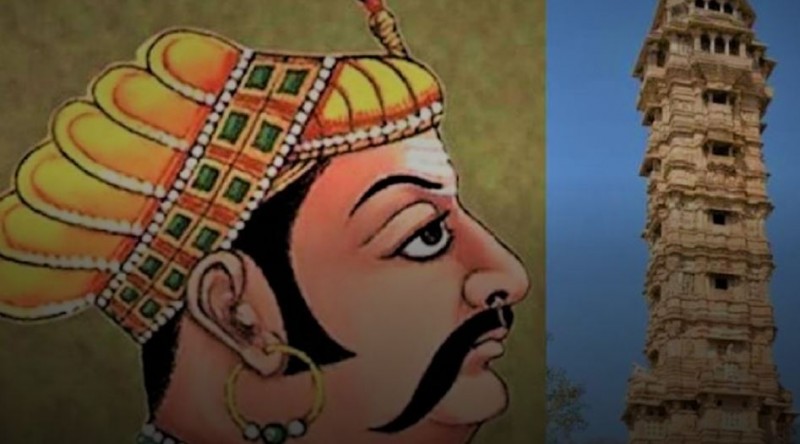
New Delhi: After the demise of Firoz Shah, the ruler of Nagor, a tumultuous sequence of events unfolded that reshaped the destiny of the city. Firoz Shah's son, Shams Khan, initially ascended the throne, but his younger brother, Mujahid Khan, orchestrated a coup to take control. The battle for supremacy would soon draw in external forces, leading to unforeseen consequences.
Shams Khan's Appeal to Rana Kumbha:
In the aftermath of his expulsion, Shams Khan sought refuge with Rana Kumbha, the leader of Mewar, beseeching his aid to regain his lost throne. Rana Kumbha, harboring ambitions to integrate Nagor into his realm, eagerly responded. Rallying his forces, he marched towards Nagor, with the intention of reestablishing Shams Khan as a vassal ruler.
A Shift in Loyalties:
Mujahid Khan, anticipating Rana Kumbha's intentions, chose not to confront the formidable Mewar army. Instead, he fled, allowing Shams Khan to be reinstated on the condition of recognizing Mewar's suzerainty. To ensure Shams Khan's loyalty, Rana Kumbha ordered the dismantling of the battlements of Nagor's fort, reducing its defensive capabilities and thwarting any potential rebellious designs.
A Broken Oath and Rana's Wrath:
The fragile peace, however, was short-lived. Shams Khan, driven by ambition or circumstance, reneged on the pact and fortified the very walls he had promised to dismantle. Upon discovering this breach, Rana Kumbha was incensed. With his spies reporting Shams Khan's treachery, Rana embarked on a journey to reclaim Nagor.
Shams Khan's Desperate Gamble:
Recognizing the imminent danger, Shams Khan sought refuge in Ahmedabad and appealed to the Sultan of Gujarat for assistance against the formidable Rana Kumbha. Cementing his alliance with the Sultan, Shams Khan further secured the relationship by marrying his daughter to Sultan Quttubbudin.
The Climactic Battle and Rana's Victory:
The confrontation unfolded as Rana Kumbha's forces confronted the combined might of Shams Khan and the Gujarat Sultanate at Nagor. In a decisive engagement, Rana's army emerged triumphant, inflicting a crushing defeat upon the invaders. The remnants of the defeated army fled to Ahmedabad, while Rana Kumbha entered Nagor in a blaze of victory.
Consequences of Defeat:
In the aftermath of his triumph, Rana Kumbha enacted a series of punitive measures. The lofty mosques constructed by Firoz Khan were set ablaze, the fort was razed, and its moat filled. As a symbolic act of reclaiming authority, Rana imprisoned women and meted out punishments. He confiscated the elephants, liberated cows from jihadi influence, and repurposed Nagor into a grazing field for cattle. Religious establishments were reduced to ashes, and the city's treasures fell into Rana Kumbha's hands.
Historical Documentation:
The chronicles of this period have been chronicled in various sources, including the writings of Briggs Ferishta, Mirat e Sikandri, Udaipur Rajya Ka Itihas by Gaurishankar Ojha, Bayley's "History of Gujarat," and inscriptions like the Kirti Stambh inscription (verses 18-23). Visual records also provide insights into this pivotal juncture.
The saga of Nagor, characterized by shifting allegiances, military showdowns, and the manipulation of power, reflects the intricate interplay of ambition, loyalty, and strategy. It remains a poignant episode in Indian history, exemplifying the relentless pursuit of control and dominion amidst the turbulence of the time.
The Notable "Navratnas" of Emperor Akbar's Court and Tulsidas's Unique Response
The Remarkable Life Story of Ravindra Kaushik: The Black Tiger of India
BJP President J P Nadda Assures Assistance for Flood-Hit Himachal Pradesh